Maple trees, renowned for their breathtaking autumn hues and expansive canopies, are a wonderful addition to any landscape. However, maintaining their health and structural beauty calls for regular pruning. Pruning not only enhances the aesthetic appeal of these majestic trees but also ensures their longevity by warding off diseases and pests. In this guide, we will walk you through the basics of pruning maple trees, explaining when and how to do it effectively. Whether you are a professional gardener or a novice tree enthusiast, this guide will provide you with valuable insights and practical tips to help your maple trees thrive.
What are the reasons for pruning a Maple tree?
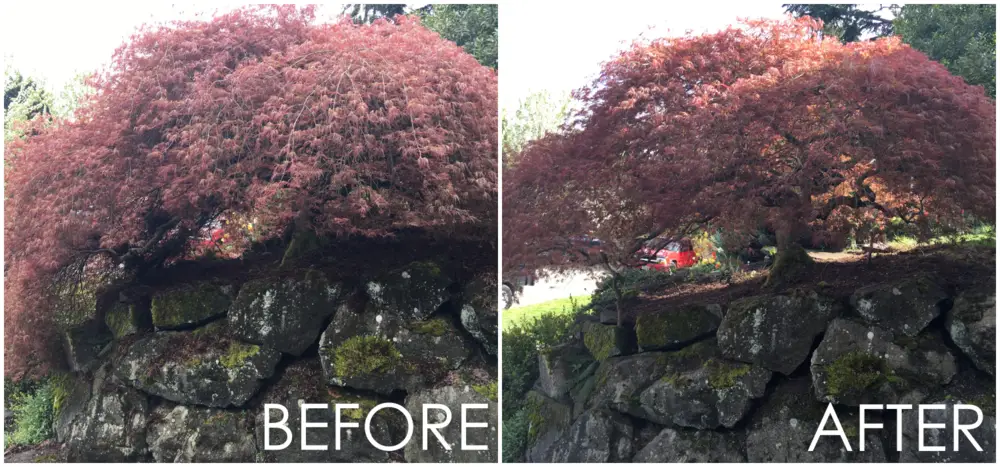
There are several reasons for pruning a maple tree. First, pruning helps maintain the tree’s overall health by removing dead or diseased branches, promoting better air circulation and sunlight penetration. This can prevent fungal growth and reduce the likelihood of pest infestations. Second, pruning can enhance a tree’s appearance by maintaining its shape and structure. This is particularly important for ornamental maples that are often the centerpiece of a landscape design. Third, pruning can ensure safety by removing branches that may pose a risk of falling and causing damage or injury.
Finally, pruning can stimulate or suppress growth, depending on how it’s done, helping control the size of the tree and encouraging the growth of stronger, healthier branches.
Necessary Supplies
Before you embark on your pruning journey, it is crucial to gather all the necessary tools for the task. Here are some of the essential supplies you’ll need:
- Pruning Shears: Ideal for cutting branches with a diameter of less than 3/4 inches. They are available in two types: anvil and bypass. Anvil shears have a straight upper blade that cuts against a flat lower one (like a knife on a cutting board), while bypass shears work more like scissors with two curved blades bypassing each other.
- Lopping Shears: Also known as loppers, they are similar to pruning shears but have long handles for better leverage. They are perfect for branches that are 3/4 to 1.5 inches in diameter.
- Pruning Saws: These come in handy when dealing with branches more than 1.5 inches in diameter. The size and type of saw can vary, so choose one that fits your specific needs.
- Pole Pruner: For those hard-to-reach branches, a pole pruner is a must. It is essentially a saw or a pair of shears mounted on a long pole, allowing you to prune branches at significant heights without using a ladder.
- Protective Gear: Don’t forget about personal safety. A pair of sturdy gloves will protect your hands, while safety glasses will shield your eyes from falling debris. If you’ll be working near power lines or at great heights, additional safety equipment such as a hard hat or safety harness may be necessary.
Remember, well-maintained and sharp tools make cleaner cuts and are safer to use. Invest in good quality tools and keep them in top shape for the best pruning results. [2]
Optimal Timing for Pruning a Maple Tree
The timing of pruning can significantly influence the health and growth of your maple tree. Generally, late winter or early spring is considered the best time to prune. This period, just before the onset of new growth, allows the tree to heal the pruning wounds more efficiently and reduces the risk of disease transmission.
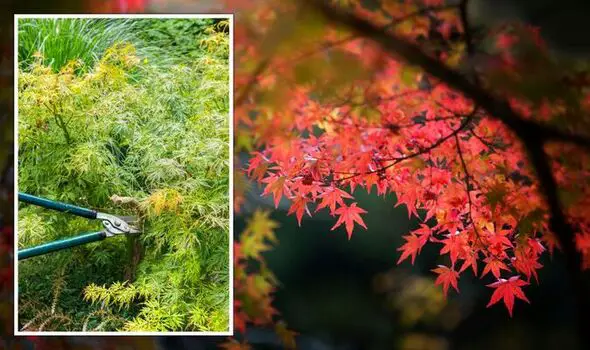
However, it’s important to avoid pruning maples in early summer as this is when they’re most prone to a condition called ‘Bleeding’. Bleeding doesn’t harm the tree but causes a sticky sap to ooze from pruning wounds which can be unsightly. If necessary, light pruning to remove dead wood or diseased branches can be done any time of the year.
Pruning Techniques and Basic Rules
Now that you know when to prune, it’s time to get into the nitty-gritty of how to do it correctly. Before you begin pruning your maple tree, keep these basic rules in mind:
- Always make sure your tools are clean and sharp. Dull blades can tear the bark instead of making a clean cut and leave the tree vulnerable to disease.
- Start from the inside out when pruning, working your way toward the perimeter of the canopy.
Avoid removing more than 25% of the tree’s foliage in one year. Prune small amounts each season instead for the best results. - Be selective about what branches you remove—aim for those that are crossed, diseased, dead, or otherwise not contributing to the tree’s overall health and beauty.
- Never top a maple tree or cut off large branches flush against the trunk. This can lead to decay and other serious problems.
When cutting a branch, it’s important to make the cut in the right place. For healthy branches with no signs of disease, the optimal spot is just outside the branch collar (the swollen area at the base of a branch).
By making your cut slightly beyond it, you’ll avoid damaging the callus tissue which helps protect against infection and decay. For diseased branches, make sure to remove them entirely, cutting well back into healthy wood if necessary.
Finally, don’t forget to clean up afterward. Make sure to dispose of any branches and debris properly, preferably by composting or chipping them into mulch for use in the garden.[1]
Maple Tree Pruning Techniques
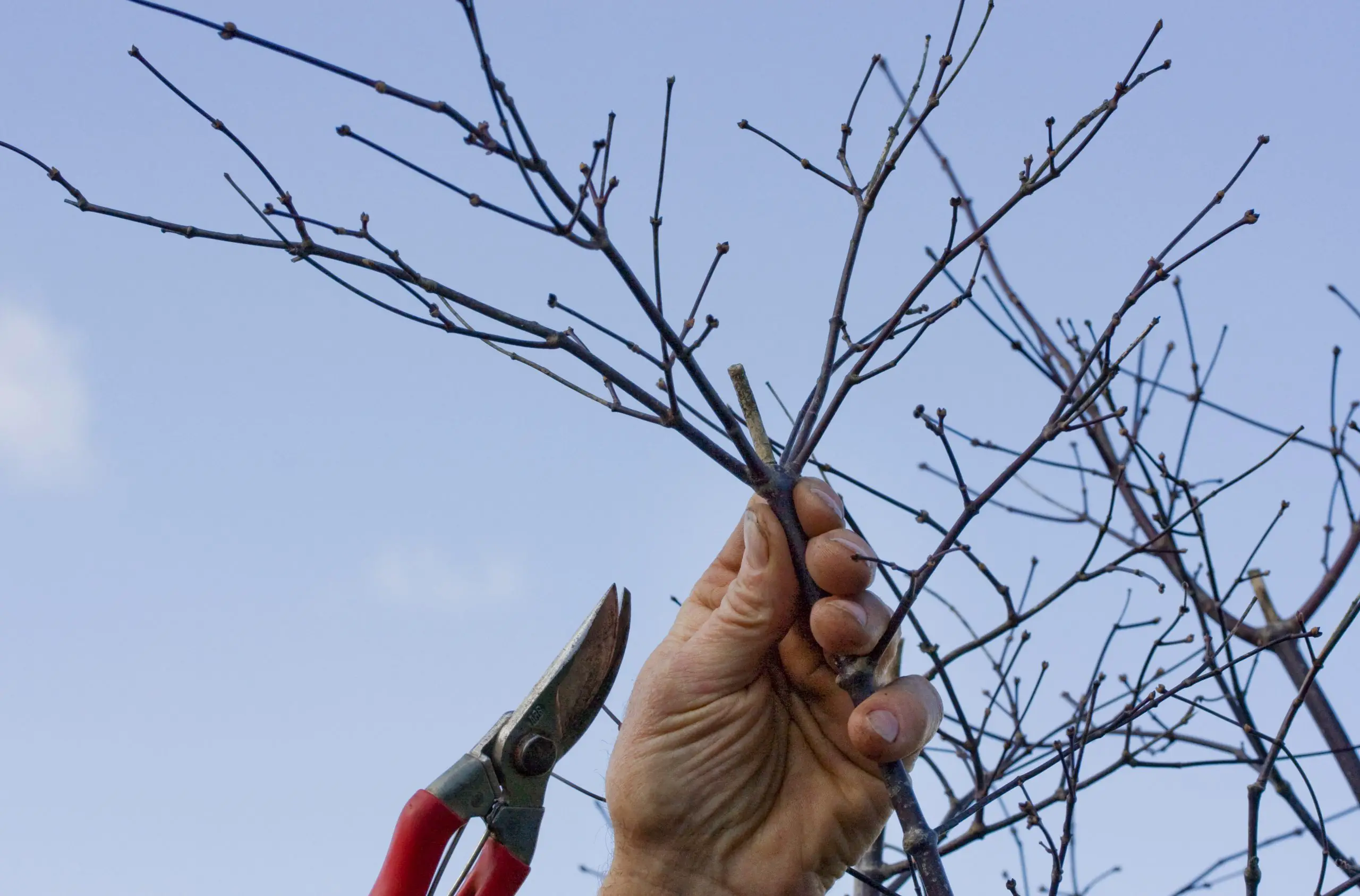
Pruning maple trees requires precision and an understanding of various techniques to ensure the health and aesthetics of the tree. Here are some techniques to consider:
Thinning
Thinning is a pruning technique that involves removing branches at the place where they originate to open up the tree’s canopy, this enables improved airflow and increased penetration of natural light. This technique promotes the tree’s health and enhances its natural shape.
Heading
Heading cuts are a technique employed to trim branches or stems, effectively shortening their length. However, careful consideration is needed before making a heading cut, as it can stimulate dense, bushy growth that may require more frequent maintenance.
Raising
Raising trees entails the careful removal of lower branches to ensure unobstructed passage for pedestrians, vehicles, and buildings. This technique maintains the tree’s health and ensures safety.
Reduction
Trimming trees is done to reduce their size, usually to clear utility lines or minimize the chances of storm-related damage. It involves pruning the leaders and branch terminals to larger lateral branches that can take on the terminal roles.
The technique you choose depends on the specific needs of your tree. Regardless of the technique, remember to make your cuts clean and sharp to promote faster healing and prevent disease transmission.
Which branches to prune from a maple tree?
When pruning a maple tree, your primary focus should be on the removal of branches that are lifeless, diseased, or impaired. This improves the overall health of the tree and helps minimize the spread of diseases. Additionally, any branches that cross each other or rub together should be pruned away to prevent damage to the tree’s bark.
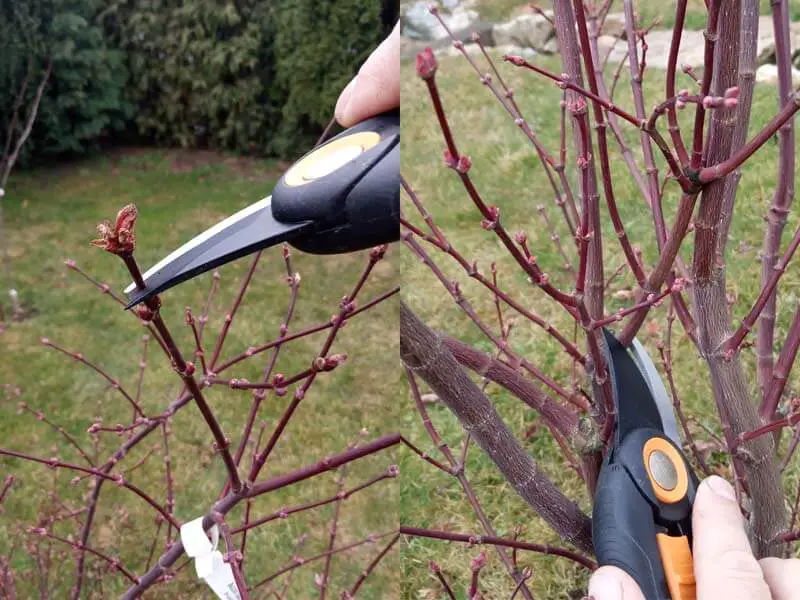
It’s also recommended to remove any branches that form at a sharp angle to the trunk, as they are typically weak and more likely to break. Overly long branches or those that disrupt the balance of the tree’s canopy should also be trimmed. Lastly, any branches that pose a threat to safety, such as those hanging over a walkway or blocking traffic visibility, should be pruned. Always remember to maintain the natural shape and structure of the tree as you prune it.[3]
Pruning Canopy and Understory
The canopy and understory of a maple tree play critical roles in its overall health and appearance. When pruning, it is crucial to address both areas appropriately.
Canopy Pruning
The canopy is the upper part of the tree, consisting of branches and leaves that absorb sunlight and aid in photosynthesis. To maintain the natural shape and balance of the canopy, make sure to prune it carefully. To improve the circulation of light and air, it is recommended to remove any dead or diseased branches and thin overcrowded areas. Be cautious not to remove more than 25% of the live crown in a single pruning session, as this can stress the tree.
Understory Pruning
The understory, or lower portion of the tree, often requires pruning for clearance purposes. This could be to provide space for pedestrian traffic, improve sightlines, or prevent branches from brushing against buildings or other structures. When pruning the understory, remember to cut back to a branch junction and avoid leaving stubs that could become entry points for disease.
Always consider the tree’s health and aesthetic appeal, and if in doubt, consult a professional arborist. Proper pruning enhances the beauty, longevity, and vigor of your maple tree.
Pruning Tips to Keep in Mind
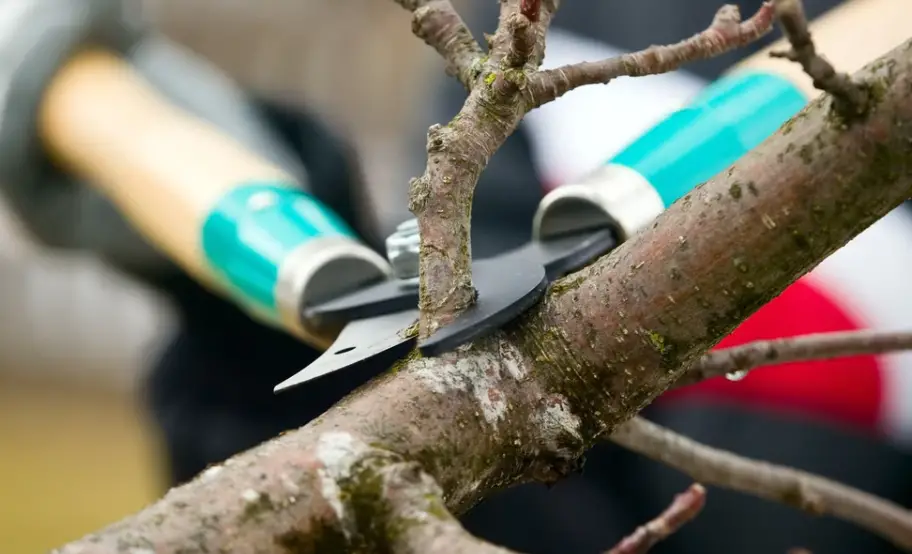
Pruning a maple tree is not an easy task, but there are a few suggestions and techniques to remember.to make the process easier. Here are just a few:
- For clean and precise cuts, it is recommended to utilize pruning tools of high quality.
- Make sure your cuts are in the right place; they should always be just outside the branch collar.
- Prune at the right time of year. Spring is usually best for maple trees, but this can vary depending on your location and tree species.
Don’t forget to clean up after pruning and dispose of branches properly.
Ensure a live crown ratio of at least two-thirds is maintained.
When reducing or raising a tree, prune back the leaders and branch terminals to secondary branches.
Always remember to practice safety when pruning – use proper protective equipment, follow instructions for ladder safety if necessary, and never take any chances while working with sharp tools. [5]
FAQ
Should Maples Be Pruned During Winter?
Maple trees can be pruned in the final weeks of winter or early spring, just before the onset of new growth. This timing allows the tree to heal the pruning wounds more efficiently and reduces the likelihood of disease transmission. However, pruning should be limited to necessary cuts, and large areas of the tree should not be removed at once. Always consult with a local arborist or extension service to determine the best pruning schedule for your specific type of maple and local climate conditions.
Is it possible to manipulate the height of a maple tree?
While you can influence the height of a maple tree to some extent through pruning, it’s important to remember that each variety of maple has a natural height range that it can reach under ideal conditions. Regularly pruning the tree’s uppermost branches can prevent it from reaching its maximum height.

However, severe height reductions, also known as ‘topping’, can severely damage the tree’s health and structure. Instead, consider the practice of ‘crown reduction’ which involves reducing the size of a tree by carefully pruning back the leaders and branch terminals to secondary branches. This technique is healthier for the tree and helps maintain its natural form.
Always consult with a professional arborist for such procedures to ensure the best outcomes for your tree’s health and aesthetics.[4]
Is it advisable to prune the upper portion of a maple tree?
Yes, it is advisable to prune the upper portions of a maple tree, especially when the aim is to maintain the tree’s health, aesthetic, and safety. However, this should be done with great care to preserve the tree’s natural shape and structure. Over-pruning or incorrect pruning can lead to damage, cause unnecessary stress for the tree, and even accelerate decay. When pruning the top of a maple tree, “crown thinning” is recommended over “crown reduction” unless the latter is necessary for reasons such as interference with utility lines. Always remember to consult with a professional arborist or your local extension service when planning significant pruning, especially at the top of the tree where the work can be more dangerous.
What’s the right way to prune a maple tree?
Pruning a maple tree correctly involves a few key steps. Pruning should be done in late winter or early spring before new growth begins. This timing allows the tree to heal wounds effectively and minimizes the risk of disease transmission. To start, eliminate any branches that are dead, diseased, or damaged.
Then, eliminate any branches that cross each other or rub together, as well as any that form at sharp angles with the trunk. Overly long branches or ones that disrupt the balance of the tree’s canopy should be trimmed next.
It’s crucial to maintain the tree’s natural shape and structure throughout the pruning process. Use the three main pruning techniques: Thinning, Raising, and Reduction, according to the tree’s needs.
Always remember to make cuts in specific locations that will not harm the tree’s growth and avoid leaving a large portion of decay-prone wood. Consult with a professional arborist if you’re unsure about making significant cuts, especially in the tree’s upper areas.[6]
Can you climb a maple tree?
Yes, you can climb a maple tree, but it should be performed with utmost care. Maple trees are generally sturdy, and their branches can support the weight of a human. However, it’s important to note that climbing should only be done by individuals who are trained and equipped with the necessary safety gear, such as a helmet, harness, and appropriate footwear. Even then, it’s crucial to assess the tree’s health before climbing; avoid climbing trees with dead or weak branches, evident signs of disease, or recent storm damage. Always remember that climbing trees can be dangerous and should be performed cautiously. If you are inexperienced or uncertain, it’s advised to seek help from a professional arborist, especially for tasks like pruning, which are often the reason for climbing trees.
What are the steps to effectively decrease the size of a maple tree?
Effectively decreasing the size of a maple tree involves a process called ‘crown reduction’. Follow these steps to ensure a healthy, balanced tree:
- Evaluate the tree’s structure: Firstly, observe the tree’s overall structure and health. Identify key branches that need reduction to maintain a balanced shape. Remember, each cut made will influence the tree’s future growth.
- Choose the right time: Late winter or early spring, right before new growth begins, is the optimal time for crown reduction.
- Identify the branches for reduction: Overly long Branches, crossing each other, or disrupting the tree’s balance are ideal candidates for reduction.
- Make the cuts: Begin pruning by cutting back the leaders and branch terminals to lateral branches. Ensure the lateral branch is at least one-third the diameter of the removed limb.
- Prune gradually: Avoid pruning more than 25% of the tree’s crown in a single session. Over-pruning can stress the tree and make it more susceptible to diseases and pests.
- Clean up: After pruning, remove and properly dispose of the cut branches, leaves, and debris. This prevents any potential insect or disease infestation.
Remember, if you’re unsure about how to proceed, it’s always best to consult a professional arborist. They have the expertise and equipment to correctly and safely reduce the size of your maple tree.[3]
Which branches should I prune from a maple tree?
Deciding which branches to prune from a maple tree involves careful observation and a clear understanding of the tree’s health and structure. Start by identifying any dead, diseased, or damaged branches – these should always be removed first. Next, look for branches that cross each other or rub together, as their friction can lead to wounds and diseases. Branches that grow at sharp angles from the trunk, or that disrupt the tree’s balance, should be considered for pruning as well. Additionally, prune branches that pose a safety hazard, such as those obstructing walkways or visibility. While pruning, it’s crucial to maintain the tree’s natural shape and structure. Remember, pruning should be done during late winter or early spring before new growth starts. It is always advisable to consult with a professional arborist if you’re unsure about making significant cuts.
What sets topping apart from pollarding?
Topping and pollarding are two different tree pruning methods, each with its unique characteristics and effects on tree health.
Topping involves the removal of large branches or a significant portion of the tree’s crown, often leaving stubs with minimal foliage. This practice is generally regarded as harmful, as it can lead to stress, decay, and increased vulnerability to insects and disease. Moreover, the tree’s rapid growth response to topping often results in weakly attached, densely crowded sprouts.
On the other hand, pollarding is a traditional pruning method that involves removing all the branches of a tree, leaving just the trunk. New shoots grow from the pollard head, the area where the cuts have been made. This process is repeated annually, resulting in a dense head of foliage and branches. Pollarding, when done correctly, can control a tree’s size and shape, boost its lifespan, and enhance its aesthetic appeal. However, it should be initiated while the tree is still young and carried out regularly by a trained professional to ensure the health of the tree.
In conclusion, while both topping and pollarding involve significant pruning, they differ in their approach, effects, and outcomes. Always consult with a professional arborist to determine the most appropriate pruning method for your tree.[6]
What happens if you cut off the top of a tree?
Cutting off the top of a tree, a harmful practice known as ‘topping’, can have severe consequences for the tree’s health and longevity. When the top of a tree is removed, it disrupts the tree’s natural growth habits, leading to a weaker tree structure and increased vulnerability to pests and diseases. The tree also loses its ability to produce food through photosynthesis due to the reduced leaf area, which can further stress and weaken the tree.
Additionally, the large, open cuts left by the topping do not heal properly, making the tree more susceptible to decay. In response to the severe pruning, the tree may also produce a flurry of shoots called ‘water sprouts’ that grow rapidly and densely, leading to a bushier, but structurally weak tree. In the long term, topping can significantly shorten a tree’s lifespan and may even lead to its premature death.
Therefore, it’s highly recommended to avoid topping and opt for more tree-friendly pruning methods, such as crown reduction or thinning.
Useful Video: Pruning a Maple Tree
Conclusion
Pruning a maple tree requires a blend of art and science. It’s not just about making cuts but doing so in a manner that promotes the tree’s health, aesthetics, and safety. While individuals can undertake minor pruning tasks, professional arborists should be consulted for significant pruning, particularly at higher levels of the tree. By adhering to the best practices such as proper timing, careful branch selection, and appropriate pruning techniques, you can keep your maple tree healthy, attractive, and safe for years to come. Always remember, the goal isn’t just to alter the tree’s size or shape, but to enhance its overall well-being and longevity. With the right pruning methods, you can easily achieve this goal.
References:
- https://gardenerspath.com/plants/landscape-trees/prune-maple-trees/
- https://mapleleavesforever.ca/to-prune-or-not-to-prune-maples-in-winter/
- https://www.monstertreeservice.com/monster-tips/plant-health/how-to-prevent-a-tree-from-growing-too-tall-know/
- https://alltheabovetreeservice.com/2020/04/06/the-ultimate-guide-to-determining-when-to-prune-trim-your-trees-shrubs-in-pa/
- https://www.gardeningknowhow.com/ornamental/trees/maple/maple-tree-pruning.htm
- https://www.myefco.com/int/green-ideas/how-to-prune-maple-trees/





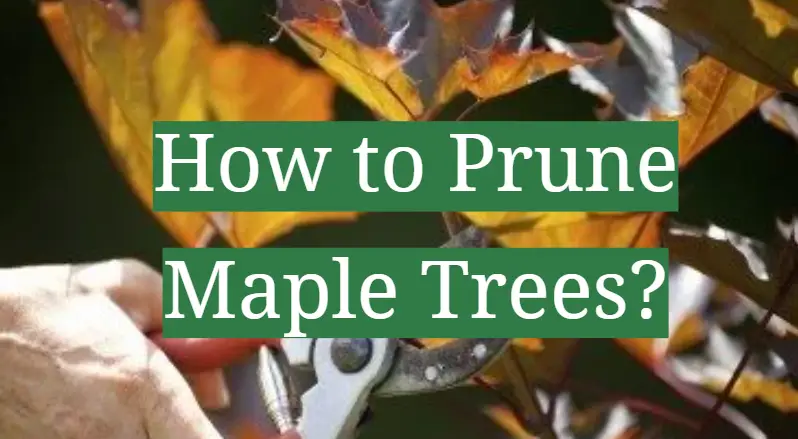




Leave a Reply
View Comments